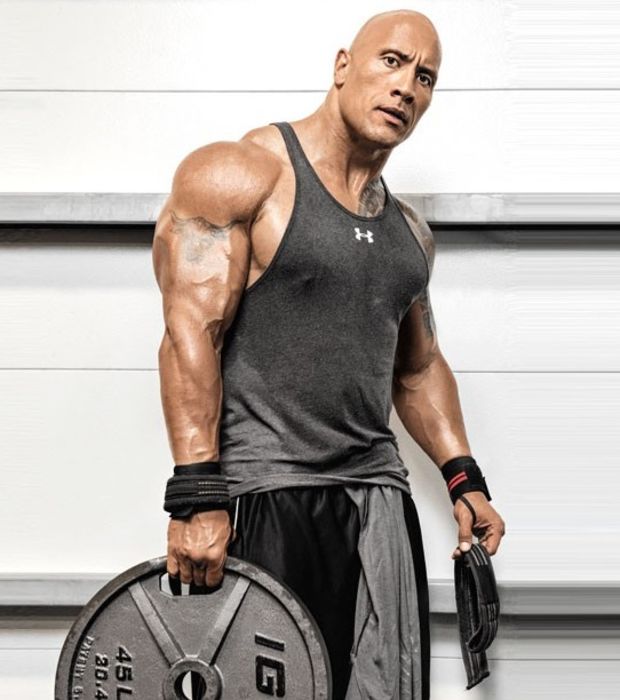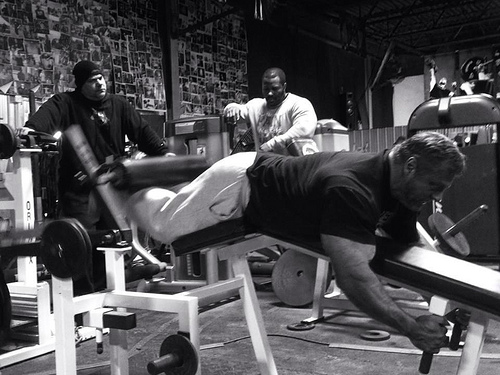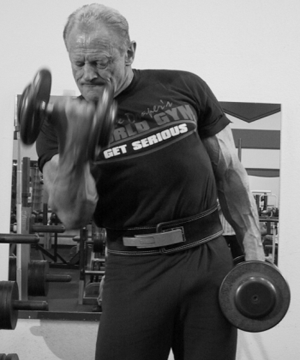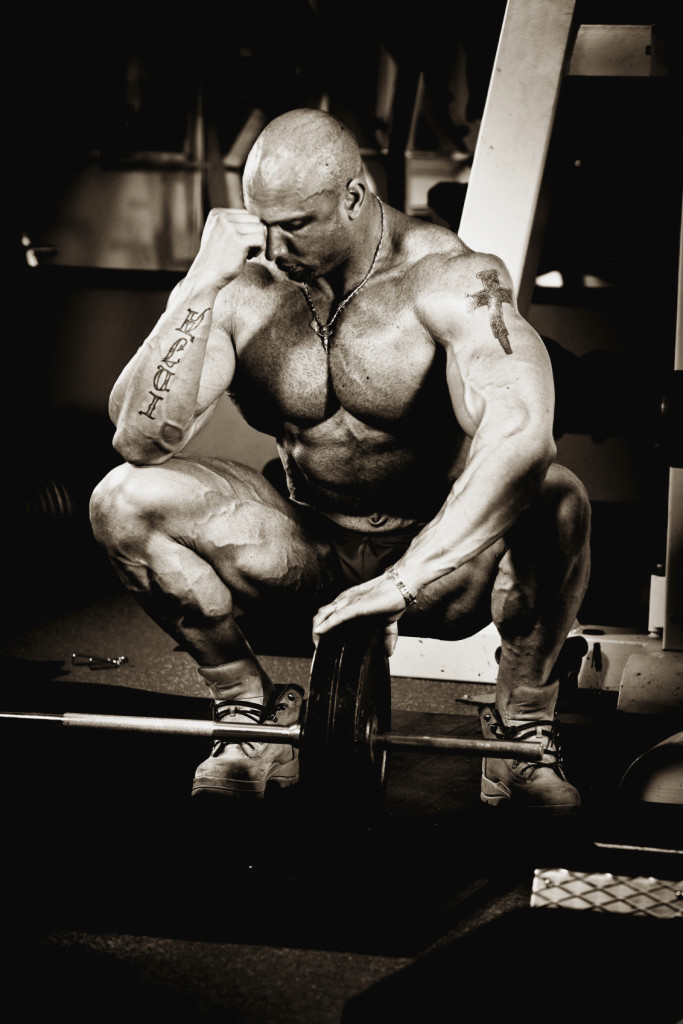Everything you’ve read about working out past 40 is a scam.
All right, that’s click-baity exaggeration. How about, if you’re fit it’s ineffective, out of touch, and painfully condescending?
Some back-story: a popular magazine asked me to write an article on weight training for the over 40 average Joe.
While I was flattered to be singled-out for this assignment, the warm & fuzzy feeling faded once I skimmed similar articles in their archives.
Suddenly, I felt embarrassed more than anything. Like I was a washed-up ball player being asked to pitch Viagra or a new line of “rich mahogany scented” Depends.
Because the articles were so damn lame.
My big issue with the whole “over 40” category is more existential.
 What does “over 40” even mean?
What does “over 40” even mean?
Cause being 40 years old today ain’t a thing like your daddy’s 40.
Now this isn’t another tired spin of the “40 is the new 30” battle cry of the truly douchey. It’s more just stating a fact. Or at least an observation.
Look around any decent gym. You’ll see plenty of dudes well past the 40-year milestone that train hard and look great, for any age. Far better than most of the 20-something dorks updating Facebook statuses between sets of blue-steel mirror stares to failure.
Heck, many Mr. Olympia competitors are over 40. Because it simply takes a long time to develop that level of muscle size and maturity.
So embrace “the lifestyle” when you’re young and don’t get too sidetracked by annoying time-sponges like career and family and you should be able to run with the young pups right into your fifties. Even run right over the Axe-spray smelling dweebs.
However, that’s not every 40 year-old. Not even close.
Many guys that age — and sadly much younger — are best described as a fricken mess.
Overweight, unhealthy, depressed, battling various orthopedic issues and even addictions, and feeling the tightening squeeze of career + family + overwhelm + getting fucking old.
I guess this less fortunate group of dudes buys more fitness magazines, hence the many “over 40” workouts that seem designed for geriatrics with one foot in the grave, the other in a walking boot from yet another slip & fall in the shower.
So that’s my main issue. The magazines tend to make a series of sweeping assumptions about mature dudes:
- They’re a physical mess
- Their gym experience to date has been unsuccessful
- They’re not interested in building muscle to look better because that’s “immature” and they have “higher level” goals, like being able to one day walk their ungrateful daughter down the aisle for her fourth marriage. But really it’s because all previous attempts at getting jacked have been a miserable failure.
- They’re so gullible they think following “the Batman vs. Superman bodyweight workout” will transform them into the office Man Of Steel in six weeks.
- They’re so time challenged that a “one hour, three times a week” workout must cover strength training, hypertrophy, mobility, correctives, cardio, and a brief discussion on the dangers of detoxes and Dr Oz.
Don’t get me wrong, these guys are real and they need help. But lost in the fray are the other dudes — the healthy men that train hard and have built decent physiques but are now left to figure this aging shit out on their own.
These are my bros. So this post is for them. Now I’m not a physical therapist or anti-aging doc and I’m certainly no plastic surgeon. But I do know a thing or two about training.
Programming for the (Healthy) 40-Plus Crowd

The Big Lifts
Just because you’re older doesn’t mean the “big” exercises like squats, deadlifts, and bench presses are suddenly too dangerous to include. Performed correctly, these movements still offer the biggest bang for your training buck.
However, with age the “performed correctly” part becomes much more important. So if you want to regularly include the big lifts (you don’t have to by the way, if your goal is just to look better) you should do the following:
- Practice near perfect technique. And never ever stop learning it. Thinking, “I know I can do that lift a bit better” is what will keep you lifting well into old age.
- Perform more warm-up sets.
- Never, ever train through pain.
- Hit your “required reps” and that’s it. Max-rep or PR sets with a big lift can be flirting with disaster.
- Never do a big lift first.
- Rotate variations of the big lift regularly. This is to prevent overuse injuries and ensure more balanced development.
For example, I haven’t done a deadlift in almost a year, but according to my log I’ve done:
- Snatch grip deadlifts
- Stiff-leg deadlifts
- Trap-bar deadlift
- DB/BB Romanian deadlifts
- Standing good mornings
- Seated good mornings
- Sumo deadlifts off pins
- Snatch grip deadlifts off a podium
- Enough back extension variations to choke the Polish army
Isolation Exercises
 For some nonsensical reason, older trainees are always pressured to dump any isolation or “single-joint” exercises to “save energy.” Like a few sets of DB curls or triceps pressdowns will be what sends them tumbling down the overtraining rabbit hole, not those excruciatingly slow 1RM deadlifts.
For some nonsensical reason, older trainees are always pressured to dump any isolation or “single-joint” exercises to “save energy.” Like a few sets of DB curls or triceps pressdowns will be what sends them tumbling down the overtraining rabbit hole, not those excruciatingly slow 1RM deadlifts.
Fact is, older lifters should do more isolation work not less, especially if trying to bring up an aesthetically weak bodypart. These exercises allow for greater mind-muscle connection, thereby cleaning up technique, which is often the limiting factor.
Furthermore, since isolation lifts aren’t as taxing as the “bigger” lifts, sets can safely go right to failure and even beyond, a powerful hypertrophy tool.
Of course, training economy still matters, so if you only have 30 minutes to work out you should prioritize a big lift, not making room for 11 variations of cable curls.
Just don’t be the dork that only bench presses and then wonders why his shoulders ache and his pecs “refuse to grow.”
Variety
Exercise variety is a grossly undervalued hypertrophy tool. Basically, the bigger your exercise toolbox, the better your results.
As researcher Brad Schoenfeld notes here “the architectural variances of muscle give support for the need for a multi-planar, multi-angular approach to hypertrophy training.”
Furthermore, if you’re older and more beat up, something as subtle as a change in grip width or hand position can be enough to mitigate pattern overload injuries.
Or you can just be stubborn and keep loading your beloved lying triceps extensions for another 25 years. By the way that’s not your dog barking, it’s your elbows.
Overtraining
Overtraining is the boogeyman of bodybuilding. Every “three days a week” gym hero works out with one eye on the clock, rushing to beat the “59 minute” deadline for fear they’ll wake up in a hospital bed hooked up to an IV with the testosterone level of an earthworm.
While few recreational lifters will ever come close to overtraining (“overreaching” is more plausible) the fact remains that older dudes get bogged down faster.
Here’s what to do or not do:
Train more frequently but with shorter workouts. Forty (hard) minutes, six days a week is more tolerable than 80 (hard) minutes three days a week. A good rule of thumb is, a few hours after completing the workout you should feel like you could go back and repeat it.
Avoid grinding reps, especially with heavy barbell work. I got a lot of respect for anyone who fights through a heavy deadlift. Just remember, those recovery checks you’re writing keep getting bigger while your bank account is only getting smaller.
Use variations of the patient lifter’s method (i.e., 8 sets of 3 crisp reps with your 5RM).
Manage volume correctly. Volume is great for building muscle but can gas you too, so push volume in waves. You could do a month at a “reasonable” level, a second month much higher, and then a month of lower volume.
Always bookend very intense or high volume phases with a deloading phase. I learned this from my friend and one time client Jeff Kushmerek, whom I admittedly gassed the shit out of (oops).
A short phase of no heavy barbell work (think single-leg variations, dumbbells) plus steady state cardio and mobility drills scheduled between serious volume or intensity “blocks” is like adding oil to your lamp.
And no, your one-week “deload” is about as impactful as a fart in a monsoon.
If you like gadgets and data, investigate HRV. Check out Mike T Nelson and Dave Dellanave for more information.
Steady state cardio is an awesome recovery tool. While it certainly helps burn fat, its effect on mood and mental clarity (not to mention cardiovascular health) is where it really shines for older guys. Just don’t turn it into yet another slog fest. Exercise shouldn’t always tear you down. My friends Alex Viada and Tony Gentilcore call it Zone 2 cardio.
Lifestyle

We all know we have to manage stress, yet most of us fail.
What doesn’t help is the irony that it usually requires years of stress to become successful at your chosen vocation and reach a stable position in life. When you can actually afford to slow down and pen hand-written thank you notes to your high school math teacher while slow roasting your own beans for your morning cup of gratitude. Something lost with every 25-year old life coach that has life all figured out yo.
Still, stress is like the Terminator. It can’t be bargained with, it can reasoned with. Push it too long and it will take you out.
So it’s no surprise that smart coaches like my colleague Luke Leaman now start their coaching process with stress management. As he says, stress can cause insulin resistance, reduced energy production, and a reduction in male sex hormones.
Or as I say, you fix the stress or at least manage it and the rest of the shit we do suddenly works.
Here’s some practical stuff that works even while you’re still hustling:
Get more sleep. You know this though. You’re surviving on five hours, not thriving. Google “sleep hygiene.”
Belly breathing. Most people take very short, shallow “half-breaths.” Get them to perform a few deep, full lung-filling breaths (in through the nose, out through the mouth) and watch their reaction. Three minutes, three times a day works wonders to get the parasympathetic nervous system back online.
Manage overwhelm. Find a way, some way. Making a point of slowing down and doing less is obviously the answer but have fun telling that to the bank when they ask why you’re three months behind on your mortgage.
A better answer is, when overwhelm hits, do the deep breathing above and go for a 15-minute walk. Running through your mental to-do list won’t help. You need to re-set your brain.
Talk to someone. If there’s one thing that I won’t change about my coaching process, no matter how often other coaches tell me I’m crazy from a time monetization perspective, it’s that I won’t stop spending time talking to my clients on the phone or Skype.
Email is a cold, impersonal tool that’s become a mechanism for delivering bad news or more shit to do. It also offers little insight into the emotional state of the person writing. I can send clients charts and forms and have them email me how they feel on a sliding scale of “shit” to “marvelous” but I hear more and learn more talking to them than in all that bullshit paperwork combined.
So many people are in survival mode. They have no idea that life is taking the piss out of them. But ask the right questions and suddenly the truth comes out, in their tone, their inflections. Seriously, fuck email.
Read more books and less blogs. We have a dog-free room with a couch reserved for reading books. So far only the dogs have used it. Another work in progress.
On to the Next Chapter
Don’t get me wrong, the only way to make fitness work for someone is if you “meet them where they are.” And for many men (and women), it’s a place where just getting up and moving or eating less shit would be an enormous win.
Still, some attention needs to be paid to the already initiated who’ve been going strong but now are starting to feel the heavy hands of Father Time.
You don’t have to change everything you’re doing. Think less working hard, and more working smart.
You know, just like what your favorite 25-year-old life coach has been saying to do since, like, forever.

